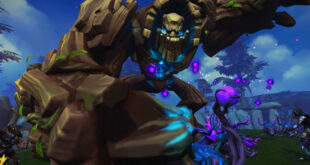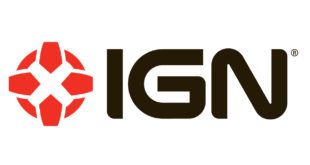Today, IGN is one of the largest and most influential games media brands around.
There are 29 editions of the site across the world. Its content is read in 22 languages and in 112 countries. In total, IGN attracts 75m unique users a month.
That’s just from its website, too – the brand has massive userbases on other platforms outside of its portal, including YouTube and Snapchat.
But back when it launched on September 29th 1996, it was just a Nintendo-focused sited called N64.com, and its way of doing things was more than a little bit different to how the games media operates today.
The approach was to create a website that would update once a day at a set time, so it was like a daily magazine,” IGN’s co-founder and GM Peer Schneider explains.
People would know when to tune in. We eventually settled on a midnight automatic update, thinking everyone would be asleep. Readers would wake up in the morning and they’d have all this new content. But everybody waited until midnight and if you were five minutes late, people were shouting: ‘Why is the site not updating?’.
That was our first encounter with really figuring out that when you create a website, audience expectations change over time and you really have to adjust your format and timing in order to serve the audience rather than the other way around.”
"Loads of people still use the games media. If the
audience is shrinking, they could have fooled me."
Peer Schneider, IGN
Over time, the games media has changed the way it covers the news. And Schneider believes that IGN’s coverage of E3 1997 influenced how other publications approached future events.
When we launched, sites behaved very differently,” he says.
When media went to E3, they all sat down, played the games and then the magazines would assemble an E3 issue that would come out three months later. The website guys, many of whom had come from print, took the same approach. About a week or so after the event, they’d put up articles about all the things they saw. There was no sense of timeliness.
When we approached E3 1997, we started a terrible thing: we started doing round-the-clock coverage. We were going to update every hour. It’s funny to say that now. We worked ourselves to death, we stayed up all night and kept on writing stories. Maybe they didn’t get that much traffic, but we created this cadence and level of excitement where you can really experience a show like E3 at home.
The numbers exploded on the site. IGN just became so much bigger through that style of E3 coverage and next year everybody covered the show like that. We created something special.”
Today, one of the biggest reasons people know IGN is for its video content. But this was not an easy transition to make.
It was a really interesting time when a lot of content was moving into video,” Schneider says.
We started by writing news, previews and reviews and reached a point where half the audience was just watching the trailer and making up their mind about what the game is going to be. We were wondering whether we even needed to write previews and how we can shift this content for a new generation. We decided we would put editors on camera, the staff who wrote the reviews would be reading them out or sitting in a chair and talking about them.
The early content was terrible. Nobody was media trained. There was some fun content where people were having a lively discussion but all the scripted stuff sounded awful. We decided to media train everyone, develop how everybody speaks and sort out how they sound on camera. There were certain people that I never thought would be a voice and perform on camera, so we were going to get voice actors in. But people shifted so quickly and really surprised me, so we never had to do that. It’s really credit to the writers and the creators that we brought on that we really defined this.”
Whether it was with event coverage, or moving into video, IGN has never sat still. Even recently, the brand launched on Snapchat, and since June this has become the publication’s biggest userbase outside of its website, eclipsing its monthly reach on the likes of Facebook and YouTube.
[Moving to new platforms] is more difficult than users realise,” Schneider says.Usually, if a user commits to a social network, that is their prime social network. They don’t see all the work that goes into the other communities that have sprung up on those platforms.
Twitter is a good example where IGN has more than 4m followers and for the longest time our approach was to announce the news there and get users back to the website. We asked ourselves whether we should announce the news before the article is ready – is that wasting it? People share the news and you don’t get any benefit from it. It took a while for us to realise that the benefit is that you gave them the news and that they follow your brand. We’d love to always jump in head first with new platforms – even something like Vessel for example, or PlutoTV. We put our content there and after about three months it wasn’t performing so we dialled back our effort a bit. It’s about being there when things first get popular.
We saw that with YouTube – there’s no games media brand that has 7m subscribers like we do because early on we decided to put our content here and see what happens. At the time, we thought it might take some views away from the site and we couldn’t monetise videos back then. But if you don’t do it early, someone else will. We staked our claim and that certainly worked out.”
Having existed for 20 years, IGN has seen highs and lows. But unlike some media companies who fall upon hard times, Schneider believes that shedding talent is not the solution.
It’s true that when media companies are in trouble they think editorial is easily replaceable and that they can dial it down,” he says.
In our history, we have seen the dotcom market crash and ad revenue going away. But our approach was not: ‘Let’s pay some freelancers for some content’ or: ‘Let’s republish articles from Europe for the US’. Our approach was to realise that the content was inherently valuable because the views are so big. It’s the ad dollars that have dried up, not the audience.
So we tried subscription, we created IGN Insider, now IGN Prime, where we put a lot of content and some community tools behind a subscription wall. We built a relationship with a part of the audience that would pay for that content: what you are seeing on Patreon now.
We’ve certainly dialled up and down the size of the teams but hopefully not at the expense of any particular group.”
"If you don’t move to a new platform early, someone else will.
We staked our claim on a site like YouTube and that worked out."
Peer Schneider, IGN
One of the narratives emerging around the games media is that it is losing in the face of growing competition from new rivals, such as YouTube personalities. But Schneider says this simply isn’t true.
This year we are going to do 3bn video views,” he says, That’s just our produced content, that’s not affiliate partners or anything like that. That’s a small number compared to all the

 MCV/DEVELOP News, events, research and jobs from the games industry
MCV/DEVELOP News, events, research and jobs from the games industry



